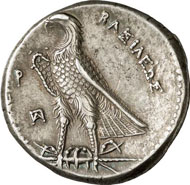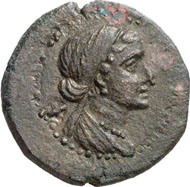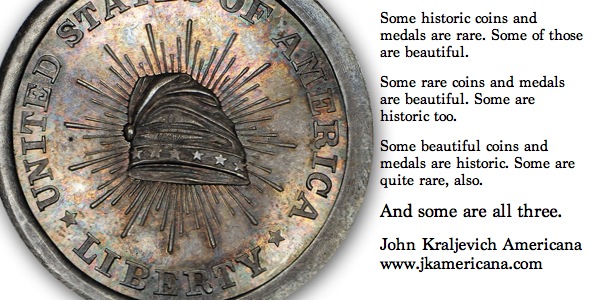
PREV ARTICLE
NEXT ARTICLE
FULL ISSUE
PREV FULL ISSUE
NUMISMATIC SURVEY OF EGYPT AND ALEXANDRIA, PART I
Ursula Kampmann has published Part I of her brief numismatic survey of Egypt and Alexandria in the October 3, 2013 issue of CoinsWeekly. Here's a short excerpt, but be sure to read the complete version on the web - there are lots of great images.
-Editor


EGYPT. Ptolemy I, 305-282. Tetradrachm Egypt was a country where it was easy to monitor foreign dealers entering and leaving the country. Only few ports were located in the marshy Nile River delta where it was easy for a cargo vessel to anchor. In the west and the east, the desert prevented trade caravans from passing through. Thus, everyone aiming at acquiring grain or the precious works of the craftsmen was forced to enter the country through one of its official borders – and that was pretty unique in ancient times. It enabled the ruler of Egypt not only to monitor entry but also to control the circulation of money. Ptolemy I had been the first to realize what big chance Egypt, this special case, provided to levy a tax without attracting attention. He made his mints struck tetradrachms that were underweight compared with the other tetradrachms that was produced for commercial purposes. Anyone who entered his empire was obliged to convert his own coins into Egyptian ones, in a ratio 1:1. That brought the ruler a nice earning, a kind of turnover tax that made the rulers of this country rich for hundreds of years simply because Egypt was the most important country of exportation in the ancient world. The basic rule was: the one who ruled Egypt was rich. He was not only rich, but so rich that none of the dignified fathers in the Roman senate thought one of their colleagues capable of dealing responsibly with this wealth. That was said to be the reason why the Romans were reluctant to annex the weak empire at the Nile River. It was Augustus who finally captured Egypt after the Battle of Actium in 31. B. C. After his victory over the Egyptian navy and the troops of Marc Antony, he advanced on Alexandria, marching at the forefront of his soldiers. On 1st August of the following year, he annihilated the last remains of Marc Antony’s forces. The rest is well-known. Egypt was conquered. Marc Antony and Cleopatra committed suicide.


CYPRUS. Cleopatra VII, 50-31. AE, 36/5, Orthosia. RPC 4501. To read the complete article, see: Egypt and Alexandria. A brief numismatic survey: part I (www.coinsweekly.com/en/Egypt-and-Alexandria-A-brief-numismatic-survey-part-I/8?&id=336&type=a)

Wayne Homren, Editor The Numismatic Bibliomania Society is a non-profit organization promoting numismatic literature. See our web site at coinbooks.org. To submit items for publication in The E-Sylum, write to the Editor at this address: whomren@gmail.com To subscribe go to: https://my.binhost.com/lists/listinfo/esylum All Rights Reserved. NBS Home Page Contact the NBS webmaster 
|